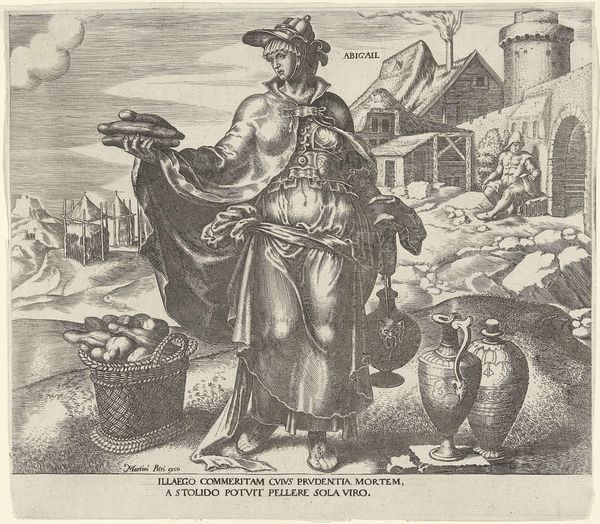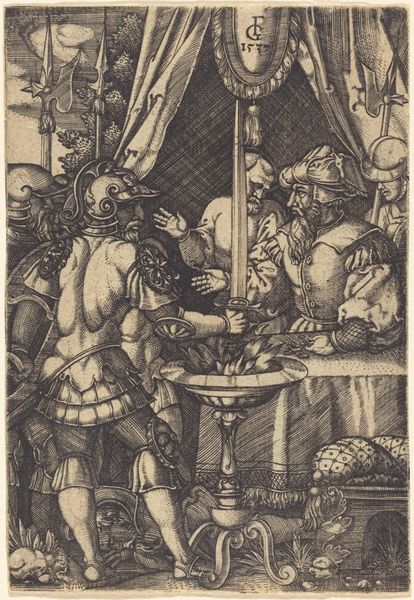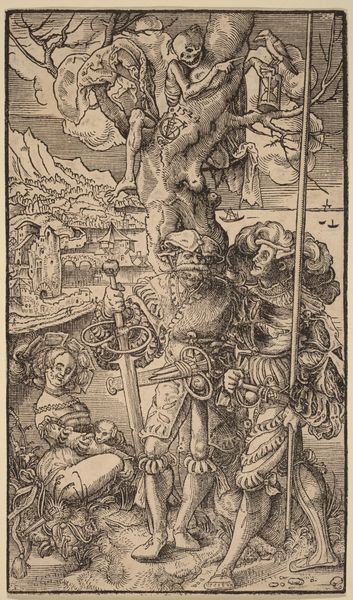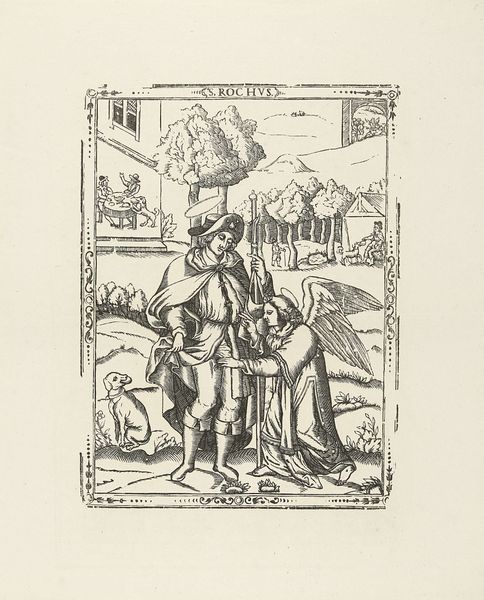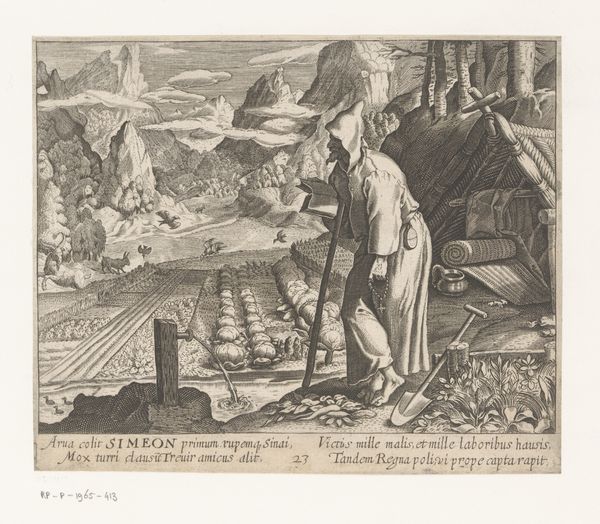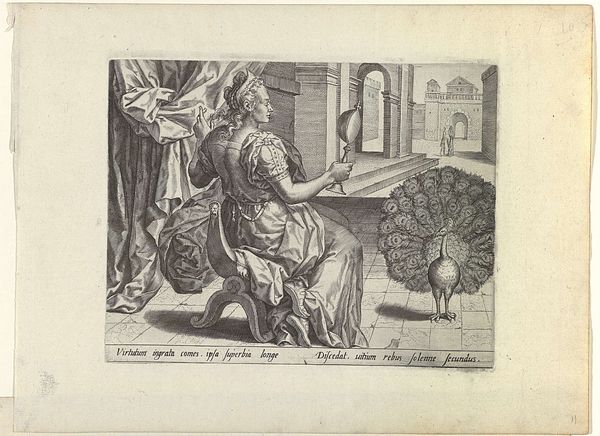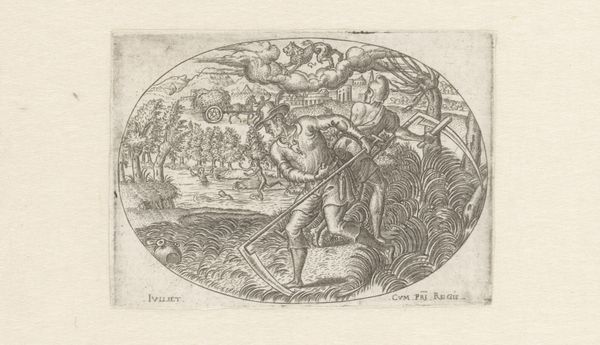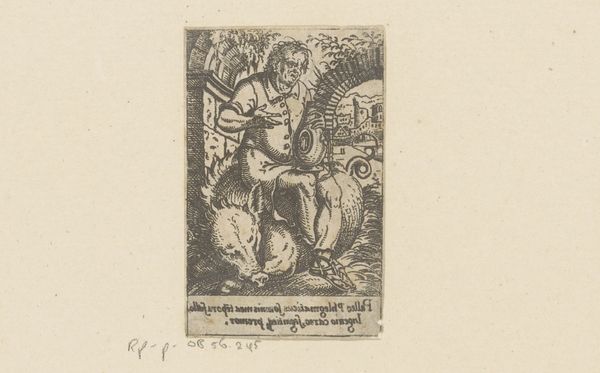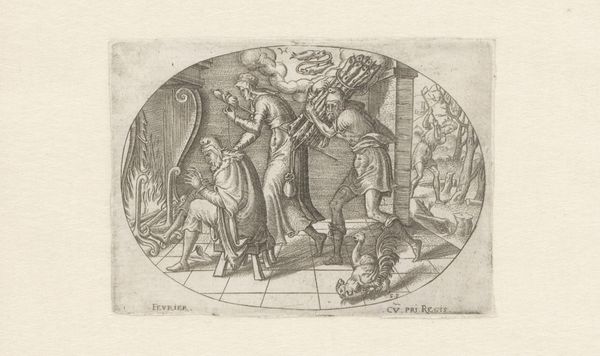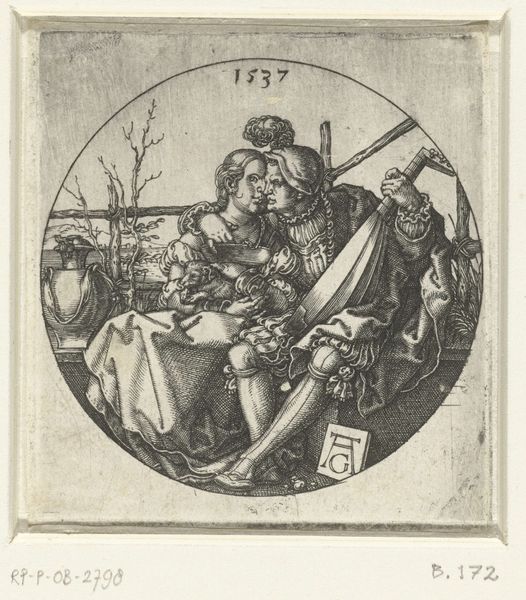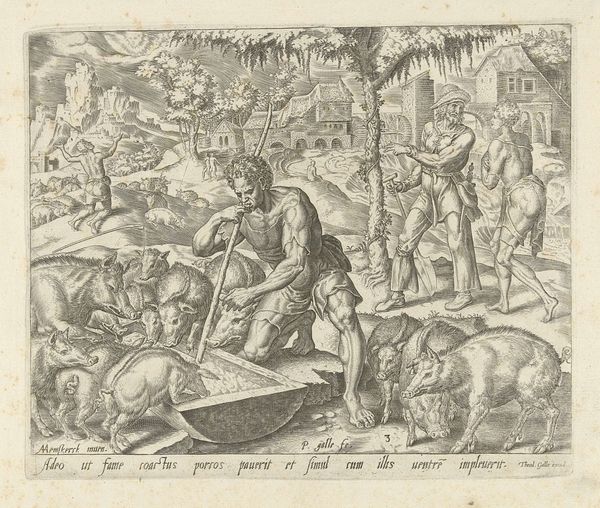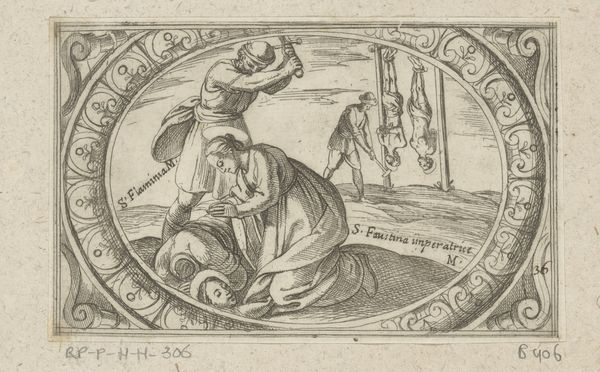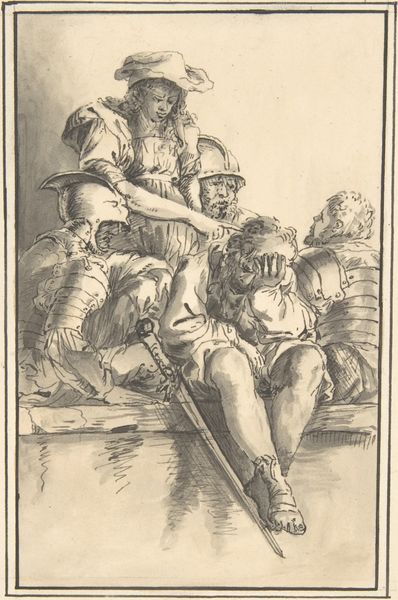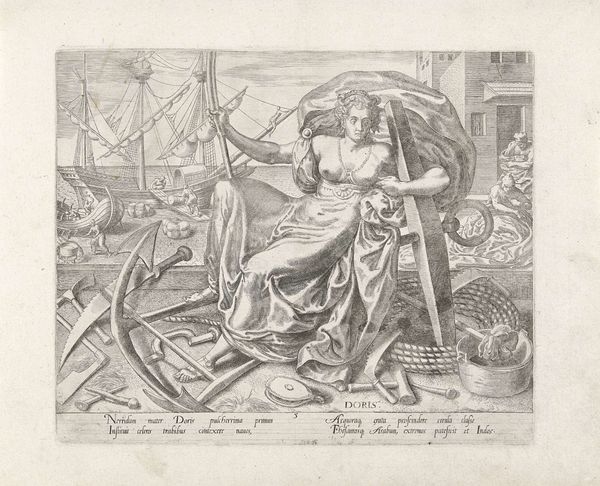
Dimensions: height 205 mm, width 247 mm
Copyright: Rijks Museum: Open Domain
Editor: Here we have Philips Galle's "Landbouw," created in 1574. It's an engraving, a print, and it has such a rich, almost overwhelming amount of detail. I'm really drawn to how it represents abundance, but I’m curious – how do you interpret this work, especially considering its historical context? Curator: Well, given its title, "Landbouw," which translates to agriculture, the piece celebrates prosperity rooted in the land. We see Ops, the Roman goddess of fertility and harvest, surrounded by symbols of agricultural wealth: bountiful produce, fertile fields, and tools of cultivation. Consider the date, 1574. This was a period of upheaval in the Netherlands, part of the Dutch Revolt against Spanish rule. Editor: So, this image could be more than just a celebration of agriculture? Curator: Precisely! Think about how images are used to convey specific messages. This image champions Dutch resilience and future prosperity by emphasizing their strong agricultural base. The scene embodies a vision of hope amid conflict, affirming the intrinsic value and enduring nature of their land and labor. It subtly pushes back against the social unrest. Editor: That’s fascinating. So the idyllic scene isn’t just a simple landscape; it’s actually a statement about Dutch identity and defiance? Curator: Exactly! It reveals how artists use imagery to negotiate public sentiment and construct cultural narratives, shaping what viewers perceive and value in art. Consider where this would have been displayed. Editor: I see now! What I thought was simply a beautifully detailed scene is actually steeped in the politics of its time. Curator: Indeed, a reminder that art rarely exists in a vacuum, often engaging with the world in profound and thought-provoking ways.
Comments
No comments
Be the first to comment and join the conversation on the ultimate creative platform.
